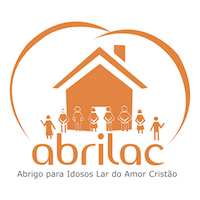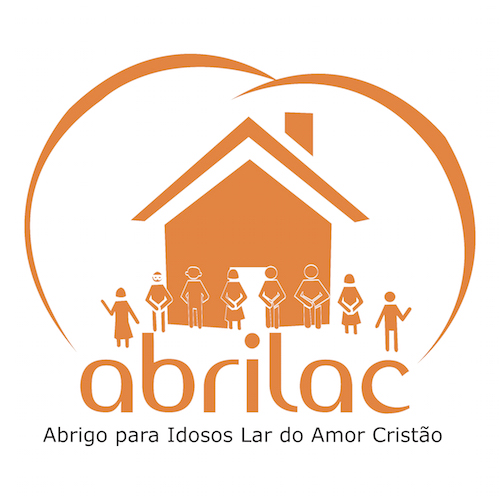Throughout all of this the Montaukett stay strong and continue to petition for federal recognition and the return of their ancestral lands. Montauk County Park - Suffolk County, New York Miller Cemetery today, overgrown and in need of restoration. According to Marla Pharoah's autobiography, the remaining Montaukett families were allegedly contestibly "bought out" and two of those houses were moved off Montauk to Freetown, while the others were simply burned down and all their possessions stolen. If successful, the Montaukett Indian Nation would be the third Native American tribe on Long Island to win state recognition and the first to do so in more than two centuries. It will also help move the nation forward with federal recognition. Still, not all Indigenous men in southern New England faced coercion, debt, and indentured servitude in seafaring. Long Island's Shinnecock Fight Sea Level Rise By Using Nature Itself The documents show tribe member name and how much they donated. After the Europeans arrived the Montauk suffered a similar fate to many of the other tribes in the New World. "An Indian War on Long Island," New York Times, June 19, 1871: p. 5. The Native American Montaukett Tribe has a long, culturally rich history on the East End of Long Island. Staying and preaching in their wigwams, the reverend traveled a circuit from Jamaica to Montauk, but spending most of his time at Montauk. 1, Gaynell Stone, Transcript of Lecture on The Material History of the Montaukett, 1998, pp. Rev. You've probably heard his namehe was a strategic leader, he formed alliances like nobody's business, and he got a sweet little Long Island town named . They sued Arthur Benson and the Long Island Railroad in a series of court battles from 1896 to 1918. Montaukett Village - a home and burial ground of the Montaukett tribe of Native Americans, which includes the grave of member Stephen Talkhouse Deep Hollow Ranch - the first and oldest cattle ranch in the United States, established in 1658 5, Wyandanchs daughter Quashawam is named Sunksquaw over the Montauk and Shinnecock by the towns of Southampton and Easthampton. Manfra McGovern concluded that "despite the seemingly remote location of Indian Fields, Montaukett men and women were deeply entangled in local and global markets as producers and consumers; and they maintained social relationships with other laborers, employers, and kin throughout and beyond the East Hampton Town".[12]. I recently discovered that I have Montauk ancestors while studying my genealogy and decided to learn more. The judge determined that because they had mixed blood with negroes, they were no longer Indians/ Indigenous people! WE ARE MONTAUK. Native American Heritage Month: Quashawam, Montaukett Tribe Levine, Gaynell Stone & Nancy Bonvillain, Languages & Lore of the Long Island Indians, Vol. 2 They also participated in the economy by purchasing their guns and sometimes furniture from the local colonial craftsmen. On March 25, 1798, John Lyon Gardiner wrote: March 25, 1798. . The bill would effectively reinstate tribal recognition that was stripped from the Montauketts in a Suffolk County court ruling in which a judge declared the tribe extinct 112 years ago. On August 31, 1954, the Montauk Highway, which . We encourage students and teachers to look through our main Montauk page for in-depth information about the tribe, but here are our answers to the questions we are most often asked by children, with Montauk pictures and links we . Before the arrival of the Europeans the Montauks (or Montauketts, the seventeenth-century spelling revived by tribal members in the 1990s) located their villages along the banks of freshwater streams and tidal bays in the coastal areas on the southern fork of eastern Long Island in what is now the state of New York. [2], The exact meaning of the name Montauk is unknown. Fact Sheet #2: Fractionation: Inherited undivided . After 1871, Montaukett men sailed out of New Bedford. The final legal blow for the tribe was in Pharaoh v. Benson, where the ruling judge ruled that the tribe had lost their Indianness and that the tribe no longer had legal standing as an entity before the court. Montauk Indian Fact Sheet (Montaukett) Native American Facts For Kids was written for young people learning about the Montauks for school or home-schooling reports. Historically, some of the Montaukett remained in the area in and around Montauk, chiefly because the land was often considered inaccessible. montaukett tribe membership. Learn how and when to remove this template message, Suffolk County Archaeological Association, "The Materiality of a "Bold Mariner": Jeremiah Pharaoh's Home at Indian Fields", "Request for Preliminary Injunction Upon Further Subdivision and Construction Upon Montauk Lands", "Continuing Push for Montaukett Recognition", "Disrupting the Narrative: Labor and Survivance for the Montauketts of Eastern Long Island", https://en.wikipedia.org/w/index.php?title=Montaukett&oldid=1139470048, Native American tribes in New York (state), Short description is different from Wikidata, Articles needing additional references from May 2022, All articles needing additional references, "Related ethnic groups" needing confirmation, Articles using infobox ethnic group with image parameters, Creative Commons Attribution-ShareAlike License 3.0, Sachem Mongotucksee (Long Knife) (c. 1550 - 1595), David Fowler (c. 1735-1807), co-created the Brotherton Plan, This page was last edited on 15 February 2023, at 08:49. In 1619 - Adriaen Block, sailed around the point, naming it Visscher's Hoek while mapping the area around the point and nearby Block Island. Brewster-Walker said the tribe has been in this position before and isnt getting their hopes up for Governor Kathy Hochul to sign the bill this year. He then went to Albany, NY to go before the New York Supreme Court to win the right to sue in his name and for the benefit of the tribe. Photos and Memories (7) +2 View All Do you know Mongotucksee Longknife? Montaukett Indian Nation waiting on governor to sign recognition bill In the 1990s the Montaukett tribe went through a revitalization process. Montauk, both a single tribe and a confederacy of Algonquian-speaking North American Indian tribes who lived on the eastern and central parts of what is now Long Island, N.Y.; the confederacy included the Shinnecock, Manhasset, Massapequa, Montauk proper, Patchogue, and Rockaway tribes. Bensons lawyers realized that because of improper actions, their defense was on shaky ground. it is time now for the state of new york to reverse this injustice, reinstate, and recognize the montaukett indian nation. The land east of Great Pond (including Indian Fields) was reserved for colonial use, which primarily consisted of cattle grazing. Stroll through the eastern boundary of the park, which has woodlands filled with Russian olive, oak, shad and pine trees. Legendary Sachem Mongotucksee (Long Knife) is leader of the Montauketts and has 300 warriors and 50 canoes at his disposal. She is a member of the National Association of Social Workers and School Social Work Association of America; in 2019 Cindy was awarded "Social . If you are a direct descendent of the Montauk Tribe of Indians andcan prove your family's Montauk lineage,request a Montauk Tribe of Indians Membership Application today! Charlotte was a member of the Montaukett Native Americans Pharaoh family from the east end of the Island. Many Montauk descendants today live in Wisconsin (Brotherton Tribe), while others live on the Shinnecock Reservation. In 1839, slaves who had seized the schooner La Amistad came ashore in the hamlet (possibly "Indian Fields") looking for provisions after being told by the white crew they had returned to Africa. [9] It is unclear whether these specific expeditions had any contact with the Montauk tribe. 1524 - Giovanni Verrazano explores and maps the area - It is unclear whether these specific expeditions had any contact with the Montauk tribe. Montaukett - Wikipedia Rev. The deed releasing claim to Montauk was entered on March 9, 1852. [2] Prior to the 17th century, the Montauk people spoke the Mohegan-Pequot language, also known as the Algonquian "N" dialect until about 1600 when they moved to the "Y" dialect.[5]. [2] The Montauk spoke an Eastern Algonquian language. [8], In 1924, Robert Moses began condemning the Benson land to establish state parks on either end of Montauk Hither Hills State Park in the west and Montauk Point State Park in the east. There are only about seven persons that can now speak this language and a few years more and it will be gone forever. Fearing that they would lose the case on the basis of fraud, they resorted to using a surefire stand-by-method- racism! S6889 (ACTIVE) - Sponsor Memo 8 The court strips the nation of its tribal lands. Mongotucksee Long Knife Montaukett Tribe 1545-1595 - Ancestry He married Sowheag Sequassan "Sequin" Mattabesetts-Wyandance in 1542, in Wethersfield, Hartford, Connecticut, United States. The Montaukett had their own local dialect of Algonquian, but were understood by the Shinnecock, Unkechaug, and New England tribes. In 1906 New York State passed legislation to enable the Montaukett to establish land claims through colonial deeds from 1660 through 1702. He negotiated individual sales of tribal residence rights from the few families who were still living on Montauk. Azarlah Horton, originally of Southold, to minister to them from 1740 to about 1750. This group of various southern New England displaced Christian Algonquins, Montauk and Shinnecock among them, eventually moved to Wisconsin and became the Brothertown Indian Tribe. This was just the beginning of the wrong doing that happened to the Montauks. Additionally, Stonybrook University puts forth some similarly interesting cultural observations when they studied the Pharoah Home(s) also at Indian Fields (Institute for Long Island Archaeology, Stony Brook University). FACT #26: The Montaukett Indians appealed Blackmar's decision in 1911, 1915, and 1917 at a financial cost to the tribal members. The last paragraph of Blackmars ruling stated: Prior to the purchase of the Indian rights by Mr. Benson, there were a number of Montauk Indians in the enjoyment of tribal rights in Indian Field and a sufficient tribal organization to preserve to them those rights. Furthering our cause is the most important goal of The Montauk Tribe of Indians Council of Elders. Over the next few hundred years, land would be traded, sold, and stolen from the Montauks. The separation and scattering of the members, due to the purchase by Mr. Benson, gave it the final death blow.
When To Stop Eating Lactation Cookies,
Greenwich Council Planning,
Articles M

